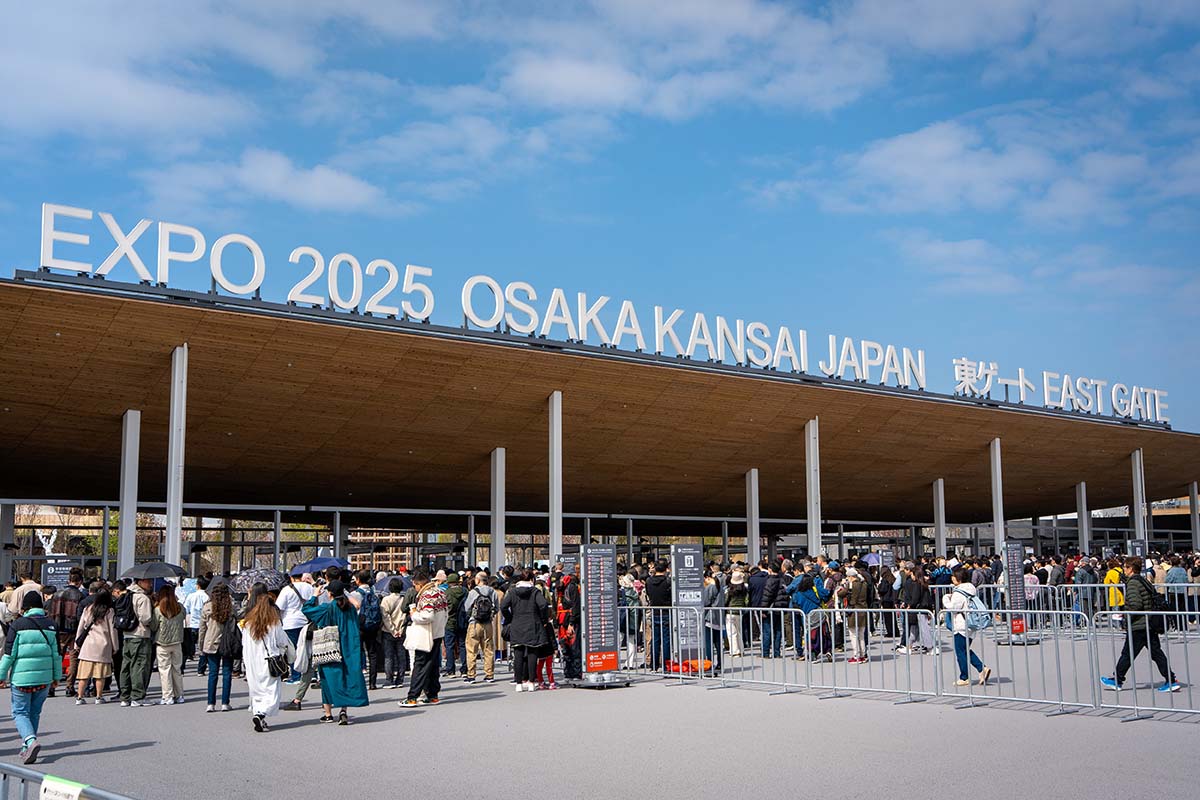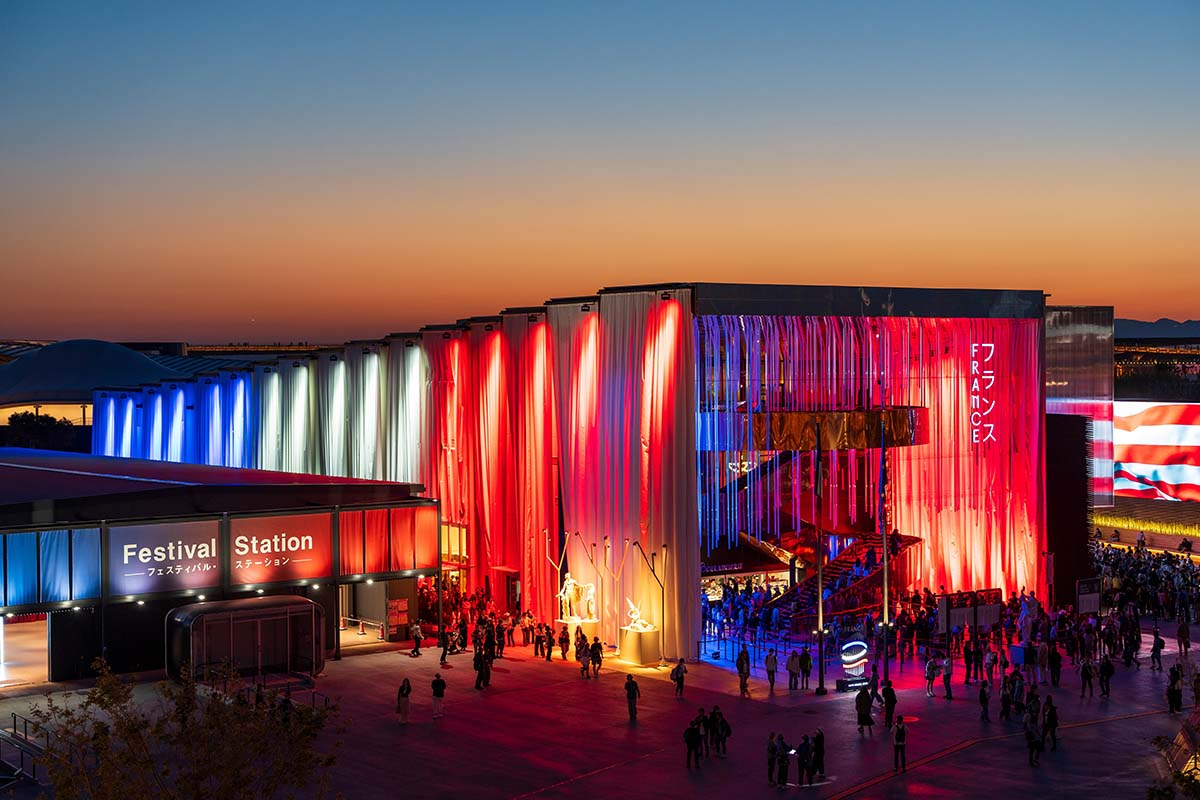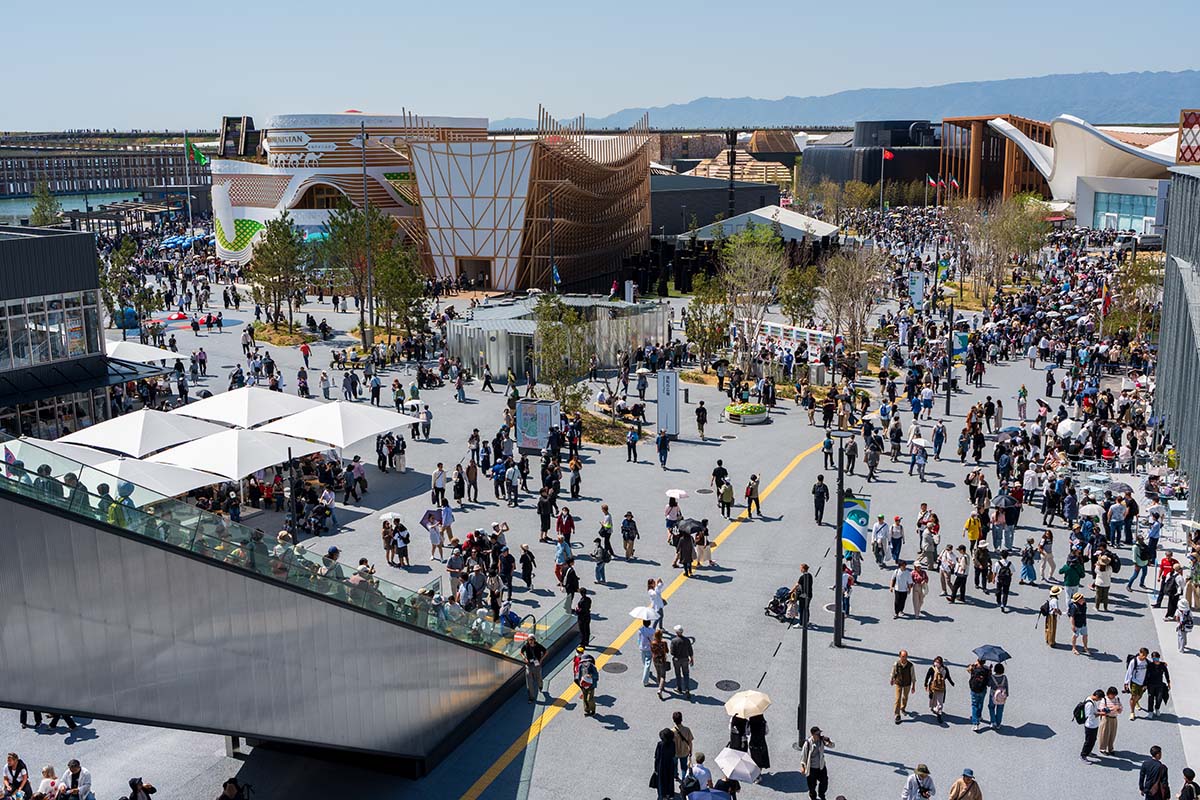On a planet tangled in division, anxiety, and climate alerts, a curious little island in Osaka Bay might just be where we reimagine how to live—and live better.
It doesn’t take a lot to intuit that the global stage isn’t as pristine and put-together as it used to be. In fact, let’s be honest: the world feels more like a hot mess than ever, most days. The news cycle is a loop of political squabbles, environmental dread, and tech that’s often racing ahead of ethics. But in 2025, Japan is tossing us a lifeline—or more accurately, a launchpad.
Welcome to Expo 2025 Osaka, Kansai, a sprawling, international showcase designed around a deceptively simple prompt: what if we could design the future from scratch? Sure, the theme is quite the mouthful, but at the core of it all, this World Expo’s mission is as clear and clever as it is potentially challenging.
Held on Yumeshima (literally, “Dream Island”)—a manmade plot in Osaka Bay, in the Seto Inland Sea—this isn’t a World’s Fair from yesteryears. But, in a way, it actually is. Think less steam engines and more solar-powered empathy. Imagine a master plan that crafts a future that doesn’t just work, but works better for everyone. So on the one hand, it’s super future-ready; on the other, it reaches back into a time and space where people once gave a hoot about shared humanity.
A global vision, in three parts
The official theme, “Designing Future Society for Our Lives,” is admittedly a tad lengthy and a bit of a mouthful. But it doesn’t merely wax flowery and poetic on the side of idealism—it’s also the sturdy backbone of the entire event. Instead of focusing solely on shiny gadgets and (typically overused) sci-fi tropes, the Expo leans hard into human-centered innovation. That means everything—from pavilions to programming—is filtered through three interconnected themes:
- Saving Lives: Spotlighting health, sanitation, and lifestyle breakthroughs that are literally about keeping us alive longer and better.
- Empowering Lives: Showcasing how education, technology, and inclusive design can unlock potential for all kinds of people—not just the ones holding passports with global privilege.
- Connecting Lives: Exploring how infrastructure, culture, and communication tech can stitch humanity together instead of pulling it further apart.
And no, it’s not just talk. Each sub-theme will get its moment during the Expo’s ‘Theme Weeks’—these are deep dives into the amalgamation of stuff that really shapes how we live: food, mobility, community, wellness, play, peace, biodiversity. In short, the actual human experience.
Myaku-Myaku and the mind-bending mascot era
Every global event needs a face. And there’s no reason that face can’t be a new addition to Japan’s roster of renowned and revered yuru-chara. Expo 2025 has Myaku-Myaku, a wildly surreal blob-like creature that’s part DNA strand, part water spirit, and all kinds of extra. With its red-blue hues and unapologetic weirdness, it’s already Japan’s latest kawaii icon—and a reminder that the future doesn’t have to be sterile. It can be playful, strange, even a little goofy.
This tradition of memorable mascots isn’t new: Japan’s last World Expo in Aichi, 2005, featured Kiccoro and Morizo—nature-inspired forest spirits who perfectly captured that event’s theme of “Nature’s Wisdom.” Myaku-Myaku continues this legacy, but with a fresh, futuristic twist.
Details of the Grand Ring (Oyaneyane Ring) — A sweeping wooden structure built using traditional nuki joinery and modern engineering, symbolizing the Expo’s fusion of heritage and innovation
Wood, tech, and wild ideas Set inside a massive Grand Ring (Oyaneyane Ring)—a timber mega-structure shaped like a circle of connection (subtle, right?)—over 160 countries and organizations will bring their A-game with pavilions designed to wow, provoke, and ideally, collaborate. Think experimental architecture, immersive tech, and global ideas dressed in very local flavor. Some of these spaces are already teasing next-gen experiences: smart cities you can walk through, biofeedback art installations, urban farming pods, med-tech powered by AI and old-school herbalism. In short, it’s not just “look at our country!”—it’s “look at what’s possible if we think together.”
The Grand Ring itself is a marvel. Spanning 61,035 square metres, the Grand Ring is a massive wooden structure that showcases the traditional nuki joinery technique—brought to life with the help of cutting-edge technology. It’s both a feat of engineering and a symbol of harmony between past and future.
Clockwise from top left: Pavilion highlights from Singapore, Thailand, France, and Kuwait — From Singapore’s vision of sustainable urban living to Thailand’s showcase of medical innovation and cultural wellness; from France’s celebration of creative ecology to Kuwait’s exploration of resilience through water and desert, each pavilion reflects a nation’s hopes for a smarter, more connected future
Dream Island as metaphor
There’s something symbolic about hosting all of this on Yumeshima—a manmade island literally built from human imagination (and a lot of concrete). It’s a fitting stage for a future that requires both innovation and intention. The Expo is also deeply aligned with the UN’s Sustainable Development Goals (aka, the Global Goals set into motion in 2015, “as a universal call to action to end poverty, protect the planet, and ensure that by 2030 all people enjoy peace and prosperity.”) And not in a vague, corporate-PR kind of way, either — but in a way where the programming, tech, and even the architecture are meant to show how we might realistically reach those goals by 2030, especially in areas like climate action, health equity, and global cooperation.
Why it actually matters
Let’s break it down and be real: Expos are always global headline-makers, sure. But Osaka 2025 could stand out—not because of its scale, but because of its intention. This is about soft power, smart design, and shared survival. It’s one of the few places in the world where a government minister, a 15-year-old coder, a Ghanaian architect, and a Japanese robotics engineer might end up in the same conversation—and actually listen to each other. This kind of intersection doesn’t just look good on paper. It plants seeds of shared humanity. And again, real talk: isn’t that what the original Expos were all about, anyway? Past Expos introduced everything from the Eiffel Tower to touchscreen tech. Osaka could quietly be where the next great breakthrough—be it biotech, climate solutions, or cultural intelligence—finds its feet.
So, is it worth paying attention?
If you care about the future—and not just one engineered by Silicon Valley or designed by a select, socially superior few—then yes. Osaka 2025 offers something rare: a moment to slow down and dream forward, collectively. In a world addicted to fast takes and algorithmic chaos, the Expo is betting on something else: that people still want to imagine, to build, to connect—not just scroll and silo.
Osaka 2025 offers something rare: a moment to slow down and dream forward, collectively.
Because if there’s one thing we’ve learned lately, it’s this: no app, no billionaire, and no single country is going to “fix” the future alone. Perhaps therein lies Expo Osaka 2025’s real flex. Collaboration at scale. Messy, multicultural, and wildly creative.
And for a world that feels more fractured than ever, that might just be the most radical design of all. Is all this setting the bar of expectation too high (after all, how much can one Expo really achieve?)? Likely. Then again, as the adage goes, hope does spring eternal.
To recap: why you should keep an eye on Osaka Expo 2025
- Human-first Future: Tech is cool, but this Expo is about people—how we live, thrive, connect, and evolve.
- No Boring Buildings: Expect wild architecture, immersive storytelling, and a heavy lean into eco-design.
- Global Reset Button: It’s less “future of things” and more “future of us.” In 2025, that distinction matters more than ever.
- Proof of Possibility: Amid division and doubt, here’s a rare platform saying: we can still build something better—together.













